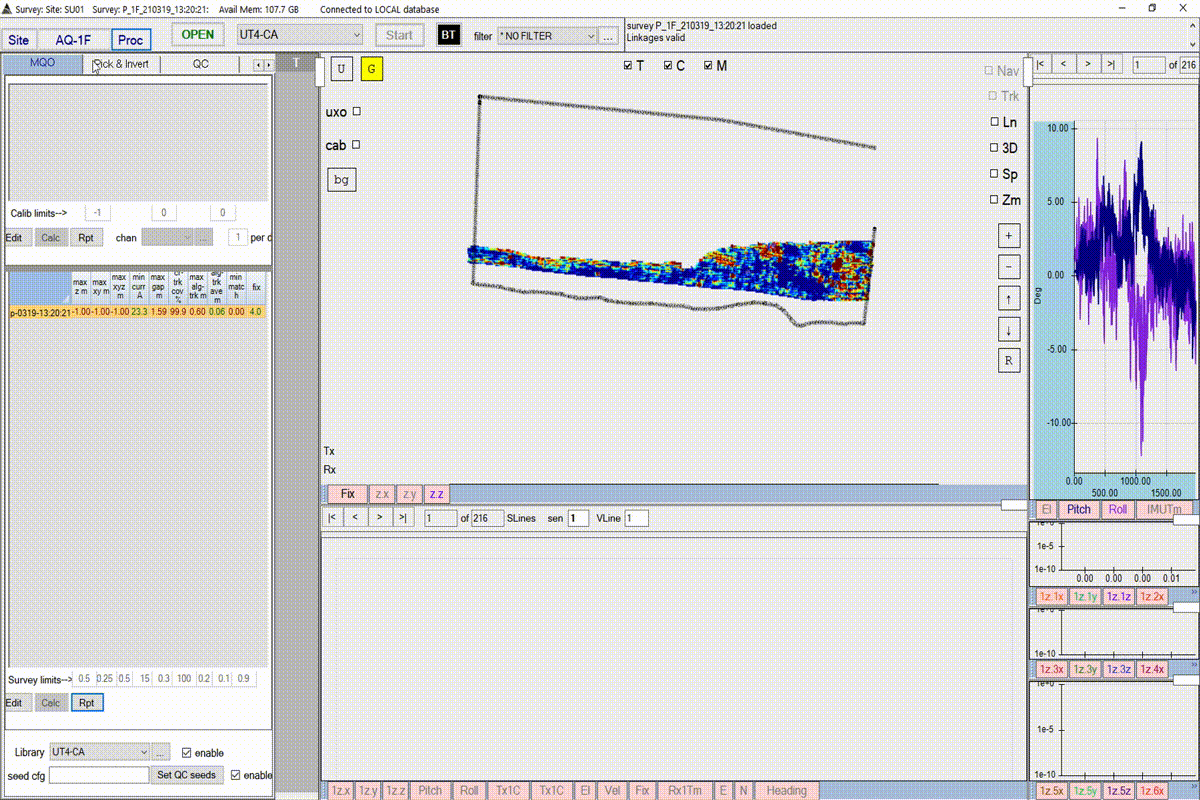Summary
This document describes standard tasks an analyst would perform when processing production data. This includes data cleaning, filtering, MQO calculation and data gap analysis.
Prerequisites
Workflow
Production data processing workflow is described in detail in the following sections.
Pre-processing
Clean, merge and detrend the survey, either by selecting Batch Process Surveys from the Site node or by clicking on the Proc tab and running the P Flow1.

MQO calculation
- Configure the Survey limits for the MQO calculation. These are described in detail here.
-
Run the MQO calculation by pressing Edit followed by Calc.

Configure and run the MQO calculation. - If your processing flow cleaners have been configured correctly than both min curr A and fix should pass and show green for passing.
-
If you don’t have cr-trk cov % of 100 or max alg-trk m less than the threshold then gap polygons have been generated. You may view these gaps and review them. Toggle them to exclusive gaps when you determine they are obstructions.

Review gap polygons. -
Polygons can also be exported to the WKT format. The WKT format can be converted to a shapefile using GIS platforms.

Export polygons to WKT file. - After review of the gaps, identification of obstruction gaps and adding recollect data, the anlysist should be able to achieve 100% cr-trk cov.
Processing parameter selection
Each project has different goals and may require careful selection of target picking, inversion and ISS parameters. The interplay of these parameters can also be important. This section explains some critical parameters and offers guidance on how to choose appropriate values.
Important points
- Cell radius should be larger than target picking merge distance, i.e. 1.8 m diameter (0.9 m radius) cell size when using a 60 cm merge distance.
- The xy inversion bounds should be larger than the cell extent (as determined by the cell radius) to allow for accurate modeling of sources outside of the cell but with significant amplitude response inside.
- ISS merge distance should reflect the footprint at which the cueing sensor is able to accurately resolve sources
Parameter guidelines
- Cell size:
- Always larger than target picking merge distance.
- Large enough to accommodate the merged picks or anomalies.
- Target picking merge distance:
- Determines # of sources. We increase this to reduce picks.
- Increasing the parameter increases the required cell size and # of models needed in an inversion to accurately model data. There is a trade-off between # of objects in inversion / cell size and # of overall picks.
- XY inversion bounds:
- Always larger than the cell extent (as determined by the cell radius).
- Depth inversion bounds:
- Conservatively set to be greater than maximum TOI clearance depth.
- ISS merge distance:
- Less than cued sensor’s detection footprint.
Target picking
Inversion
Informed Source Selection (ISS)
- ISS.